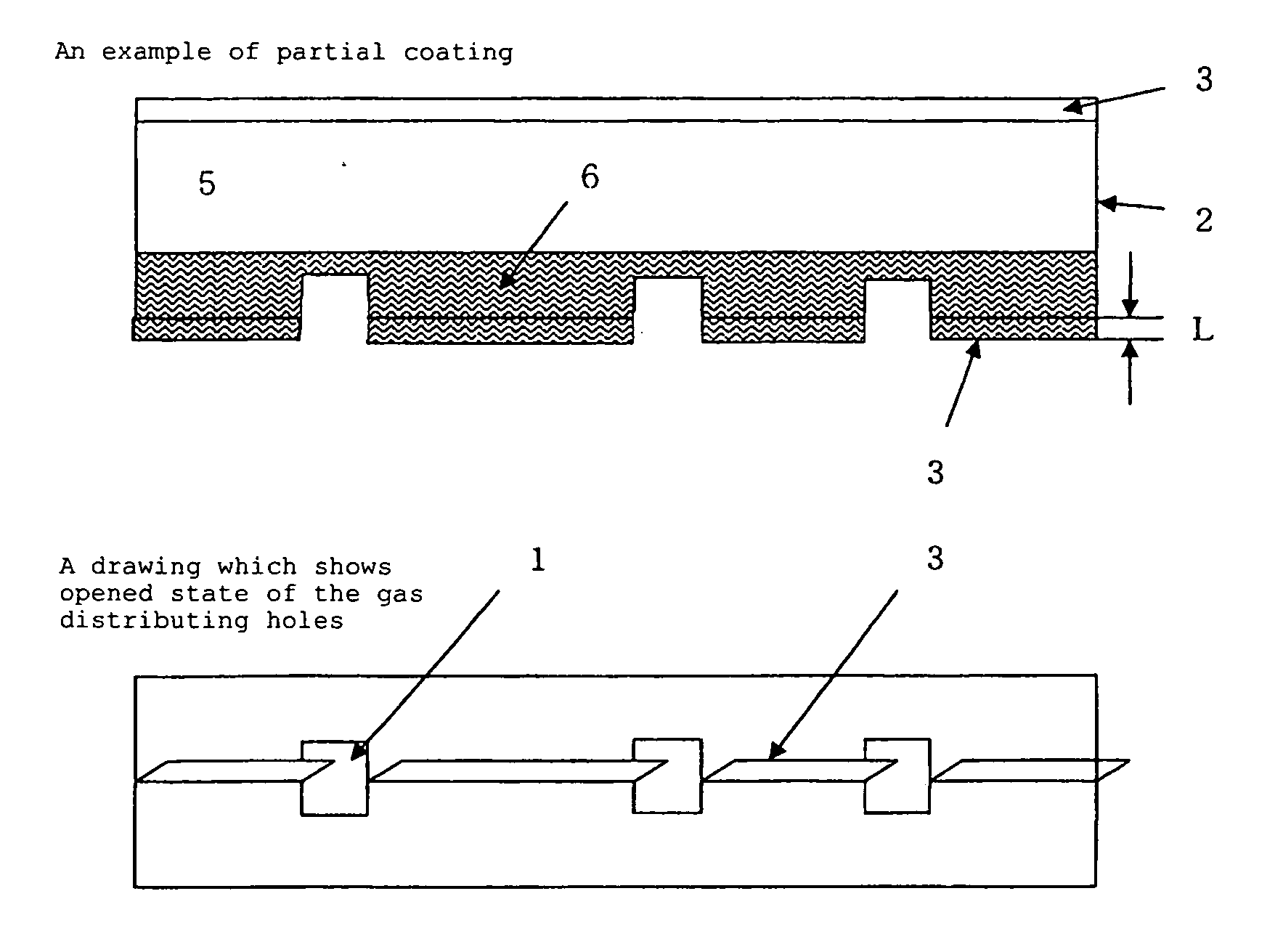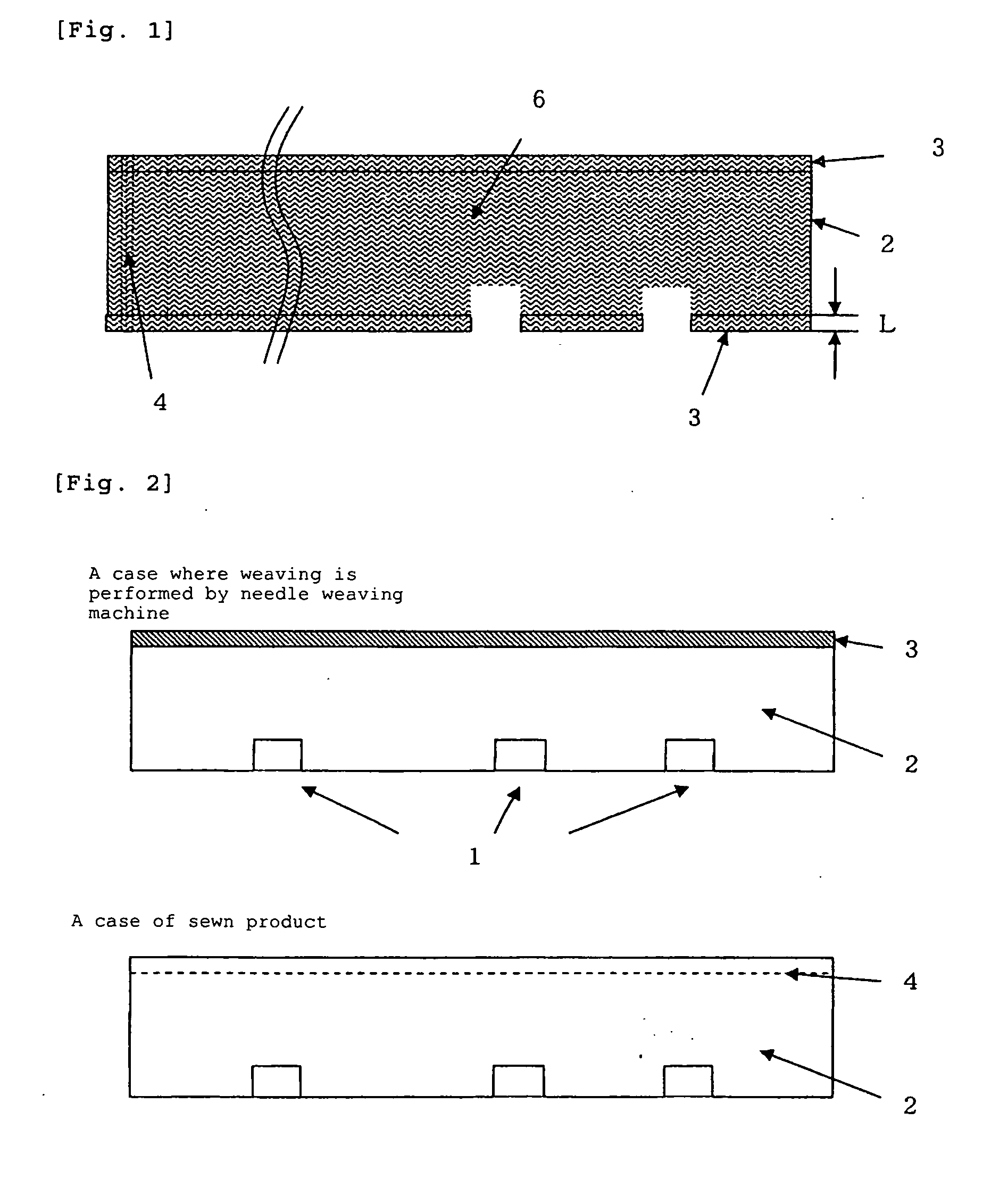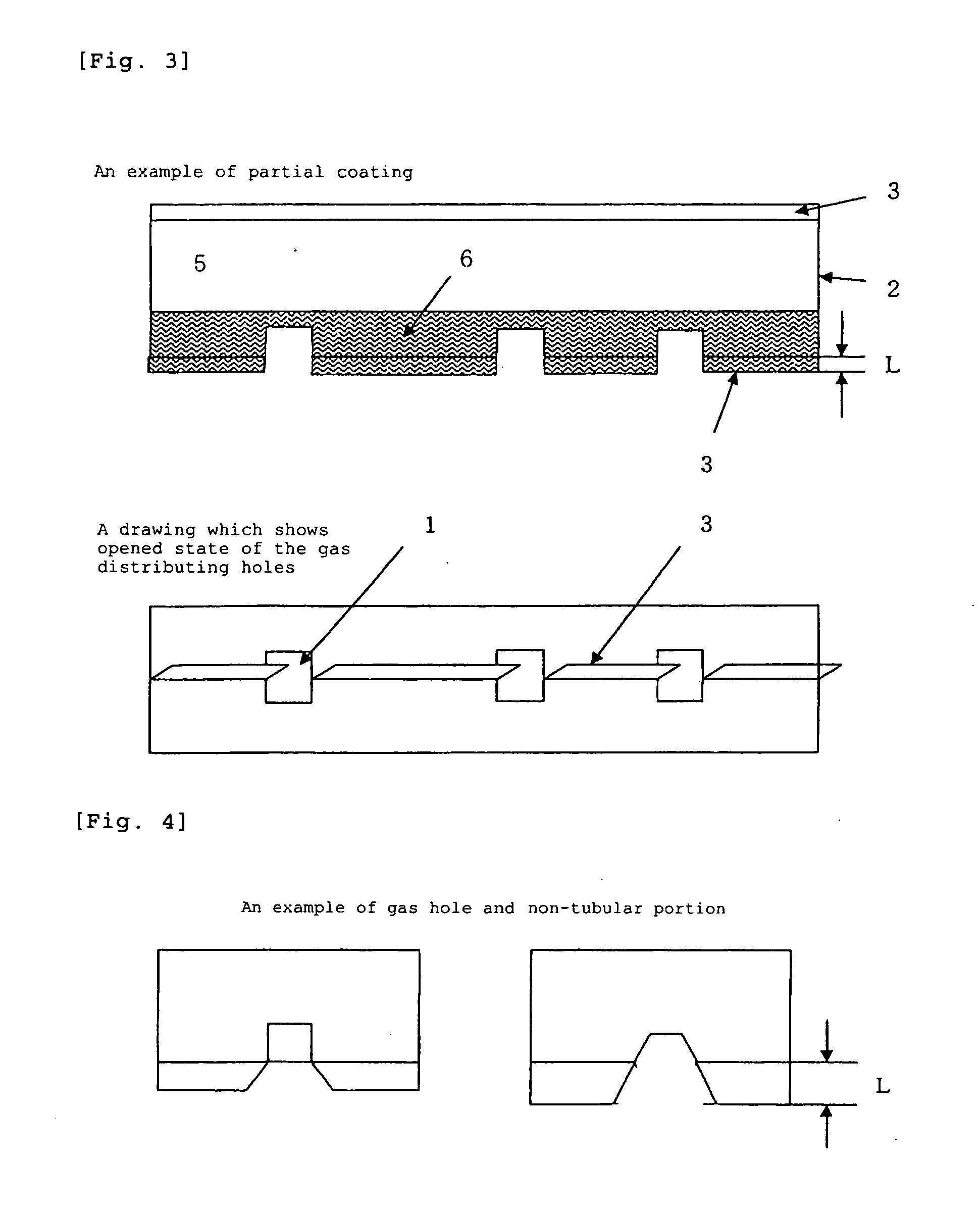Hose for Introduction and Distribution of Inflator Gas
- Summary
- Abstract
- Description
- Claims
- Application Information
AI Technical Summary
Benefits of technology
Problems solved by technology
Method used
Image
Examples
experimental example 1
[0079] A jacket (tube-shaped woven fabric before coating) was woven by a hollow weaving using a water-jet weaving machine equipped with dobby. The filament used was polyamide 66 fiber with a tenacity of 8.1 cN / dtex where warp was 470 dtex / 72 f and weft was 470 dtex / 72 f in which single yarn of both had around cross section. After that, the product was subjected to a washing step at 95° C. and to a drying / setting step at 180° C. to give a woven fabric where 16 rows of tubular-shaped woven products were aligned in parallel in a warp direction so as to make tubular portion width 68 mm, interval with the adjacent tubular portion (hereinafter, referred to as non-tubular portion) 30 mm and total width 160 cm. Weaving density and CF of the tubular portion are shown in Table 1.
[0080] Both sides of the resulting broad-width multi-row-woven fabric were applied with a coating agent (silicone resin: “Elastosil LR 6200” manufactured by Wacker) containing an additive (“Adhesion Promoter HF86” ma...
experimental example 2
[0081] The same operation as in Experimental Example 1 was carried out to give a woven fabric except the use of polyamide 66 fiber with a tenacity of 8.0 cN / dtex where warp was 470 dtex / 72 f and weft was 470 dtex / 72 f in which single yarn of both had a nearly elliptic cross-section and degree of flatness (long diameter / short diameter) was 3.0. The result is shown in Table 1.
experimental example 3
[0082] A jacket (tube-shaped woven fabric before coating) was woven by a hollow weaving using a Rapier weaving machine equipped with dobby. The filament used was polyamide 66 fiber with a tenacity of 8.1 cN / dtex where warp was 470 dtex / 144 f and weft was 470 dtex / 144 f in which single yarn of both had a round cross section. After that, the product was subjected to a washing step at 95° C. and to a drying / setting step at 180° C. to give a woven fabric where 16 rows of tubular-shaped woven products were aligned in parallel in a warp direction so as to make tubular portion width 68 mm, interval with the adjacent tubular portion (hereinafter, referred to as non-tubular portion) 30 mm and total width 160 cm. Weaving density and CF of the tubular portion are shown in Table 1.
[0083] The resulting broad-width multi-row-woven fabric was subjected to a heat cutting at the part which is 15 mm from the boundary of the tubular portion in parallel to the warp with the full length of 2 m to prepa...
PUM
 Login to View More
Login to View More Abstract
Description
Claims
Application Information
 Login to View More
Login to View More - R&D
- Intellectual Property
- Life Sciences
- Materials
- Tech Scout
- Unparalleled Data Quality
- Higher Quality Content
- 60% Fewer Hallucinations
Browse by: Latest US Patents, China's latest patents, Technical Efficacy Thesaurus, Application Domain, Technology Topic, Popular Technical Reports.
© 2025 PatSnap. All rights reserved.Legal|Privacy policy|Modern Slavery Act Transparency Statement|Sitemap|About US| Contact US: help@patsnap.com



